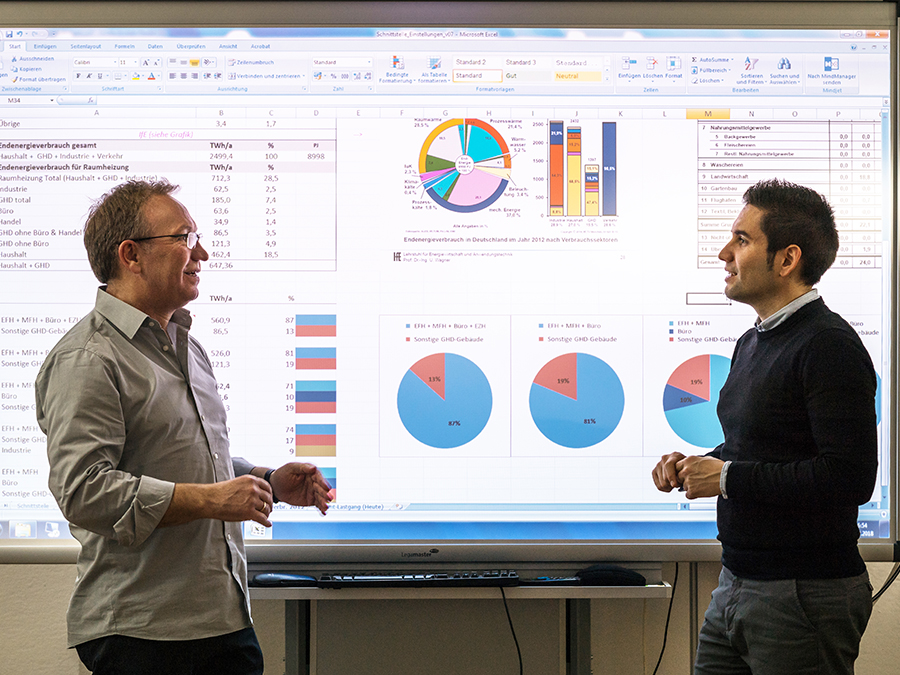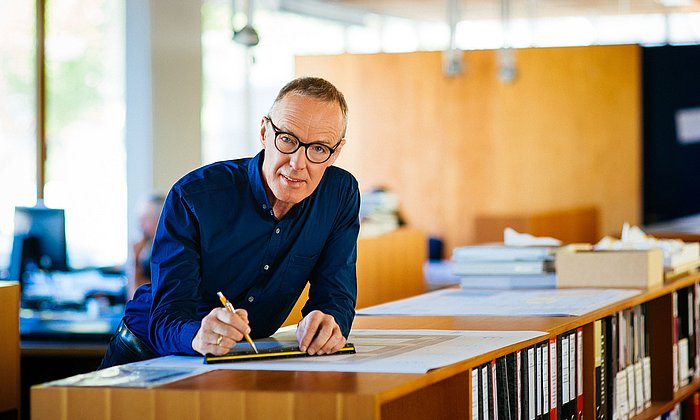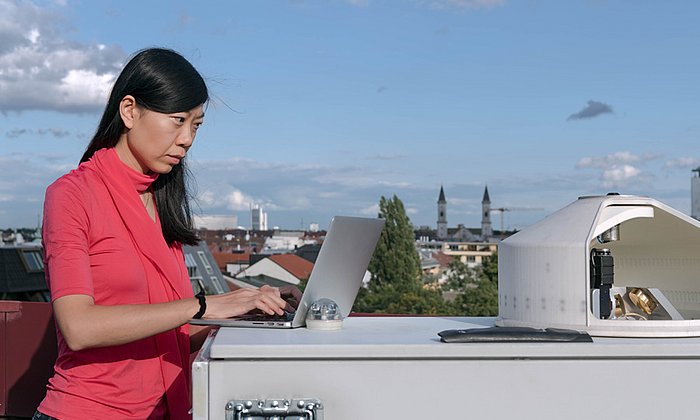Using building stock as an intelligent component in the energy transformation
Electric heating could save CO2 emissions

The German government has set a target of generating 80 percent of the country's electric power with renewable sources by 2050. However, renewable energy generation depends on natural sources and therefore it is difficult to control. Consequently, experts have been working for years on ways to store surplus power or adjust consumption to generation. Potential intelligent components in future energy systems could be buildings. This would also make a carbon-neutral building stock a more realistic possibility.
That is the conclusion reached by Thomas Auer, Professor for Building Technology and Climate Responsive Design at TUM's Department of Architecture. He worked with Prof. Thomas Hamacher and Prof. Ulrich Wagner from the Department of Electrical and Computer Engineering to develop a simulation tool to link the electric power and building sectors.
Toughest challenge: the building stock
"Everyone keeps looking for ways to save energy in new buildings. The talk is all about zero energy buildings – but new buildings are not our biggest problem," says Prof. Auer. "The major part of our building stock dates back to the time before 1980 – in other words, it predates the German ordinance on thermal insulation. We can't remedy the overall situation with a few new buildings here and there." Auer shows how existing buildings can be used intelligently to help bring about the energy transformation. And he is not referring to energy retrofits, which are often difficult to implement.
Buildings as load management buffers
Auer proposes linking the operation of buildings more closely to the electric power network to balance out the fluctuating supply from renewable sources. In the winter there is more wind – and therefore more wind energy – than in the summer. This could be used to supply heat by means of heat pumps. At present, most heating in Germany depends on fossil fuels, specifically oil and gas.
The excess power generated by solar cells in the summer months could help to cool buildings – a function that will become more important through the effects of climate change, says Prof. Auer. "We need to adjust the setpoint temperature of rooms to the peak generation in the power network. That would turn the building stock into a sort of buffer for load management – in other words a means of managing power consumption." This way, huge power loads could be shifted towards the building stock in a very short period of time.
A comprehensive simulation tool
In the simulation, the team of researchers linked a model of Germany's overall energy supply system to a detailed model of the building stock. The energy supply model incorporates various development scenarios for renewable energy sources up to 2050. The building stock model is able to represent up to 75 percent of the current energy demand for heating in Germany and takes into account several building types and energy efficiency classes. For example, the energy consumption of an office building differs from that of a one-family home. In addition, this model permits the study of scenarios based on the different possible upgrade decisions and energy technologies used in buildings. Auer calculates the electric power consumed within one hour – known as the load profile.
The combined simulation shows that under this approach, a carbon-neutral building sector would be possible by 2050 – although the use of electricity to operate buildings could almost double peak power demand during a cold period with lack of wind and sun. This would require an upgrade of the power infrastructure.
Publication:
Auer, T; Hamacher, T.; Wagner, U.; Atabay, D.; de-Borja-Torrejón, M.; Dornmair, R.; Kuhn, P.; Maderspacher, J.; Sänger, F.; Laenge, J.; Finkbeiner, J.-L.: Gebäude als intelligenter Baustein im Energiesystem. Lastmanagement-Potenziale von Gebäuden im Kontext der zukünftigen Energieversorgungsstruktur in Deutschland. Im Endbericht der Forschungsinitiative Zukunft Bau, Technische Universität München, 2017, p. 85. DOI: 10.14459/2017md1378336
The report is available online.
Sänger, F.; Atabay, D.; de Borja Torrejón, M.; Dornmair, R.; Maderspacher, J.: Demand Side Management potential of buildings. 6th Colloquium of the Munich School of Engineering. In: New Concepts in Energy Science and Engineering. Munich School of Engineering, Garching, 2016, p. 10.
DOI: 10.14459/2015md1305104
More Information:
The research project was funded by the Research Initiative "Zukunft Bau" of the Federal Institute for Building, Urban and Regional Research. The research was also supported by numerous partners in industry. The study expands on the results of a project, published in 2014 by Prof. Auer's predecessor, Gerhard Hausladen (now professor emeritus).
Contact:
Prof. Dipl.-Ing. Thomas Auer
Technical University of Munich
Chair of Building Technology and Climate Responsive Design
Phone: +49 89 289-22475
thomas.auer@tum.de
Technical University of Munich
Corporate Communications Center
- Lisa Pietrzyk
- lisa.pietrzyk@zv.tum.de
- presse@tum.de
- Teamwebsite

